The Sangai Festival, a vibrant celebration held every year in Manipur, India, offers a captivating glimpse into the diverse cultures of the northeastern states. Named after the Sangai deer, endemic to Manipur, the festival showcases the unique traditions and customs of each state. For ten days in November, visitors are treated to a mesmerising array of folk dances, featuring colourful costumes, intricate footwork, and soulful melodies.
Beyond the stunning performances, the Sangai Festival fosters a spirit of unity and camaraderie of cultural richness and diversity. While the sheer number of performances can be overwhelming for first-time attendees, this guide highlights some of the most popular and iconic folk dances featured at the festival, providing insights into their origins and meanings.
Khamba Thoibi – The Queen and the Pauper
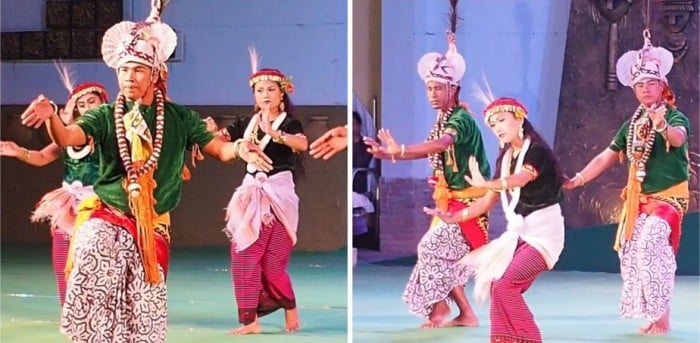
Khamba Thoibi is a popular folk dance that features both male and female dancers, dressed in the traditional costumes of Khamba and Thoibi, who are important characters in Manipuri mythology. The dance retells the tragic love story into a captivating performance.
The male performers take on the role of Khamba, a poor but noble young man, while the females act as Thoibi, a royal princess from Moirang. The performance follows their story to be together, despite the disapproval of Thoibi’s father and rival suitors. The more experienced dancers often take the lead for the others to follow in their stead.
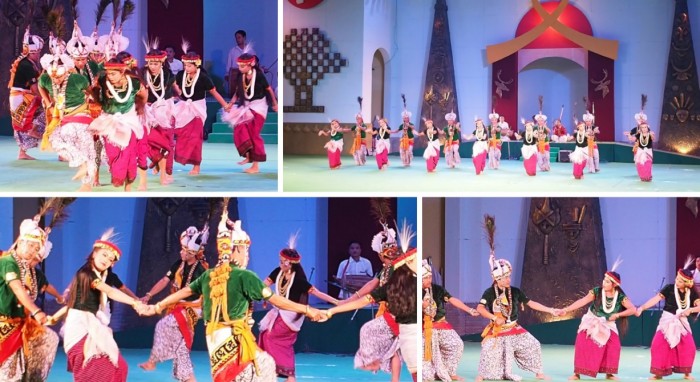
The dance begins slowly, with slight movements of their hands and feet, which gradually increases in tempo as the dancers move in rhythm with the accompanying music. The emotionally-charged folk dance ends off with an energetic tug of war between the male and female performers, and eventually running off to the women’s side of the stage.
This last part reflects a tussle that Khamba and Thoibi went through, with the former flirting indecently with the latter while in disguise, to test her faithfulness. The tale sadly ends with a fearful Thoibi fatally stabbing Khamba with a spear.
Cheraw – Skipping Over Bamboos
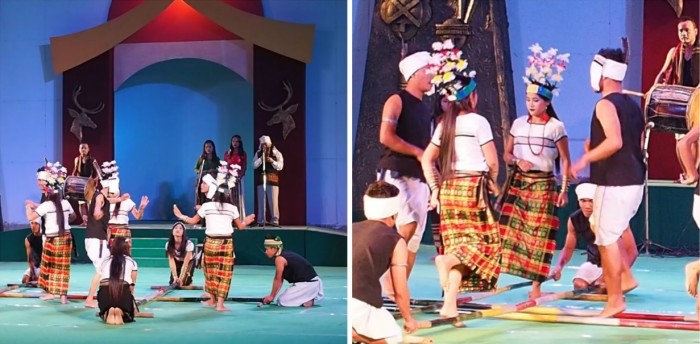
The first thing that will grab your attention in the Cheraw dance would be the bamboo staves that the male performers are holding onto. The staves are kept cross and horizontal on the floor, forming blocks where the female performers can step in and out from.
However, it’s not as easy as it sounds, as the male performers will rhythmically tap the bamboo staves together, meaning that the open blocks will open and close at certain times. Female performers need to be quick and agile to dance along with the beat, lest they get their feet trapped between the moving bamboos!
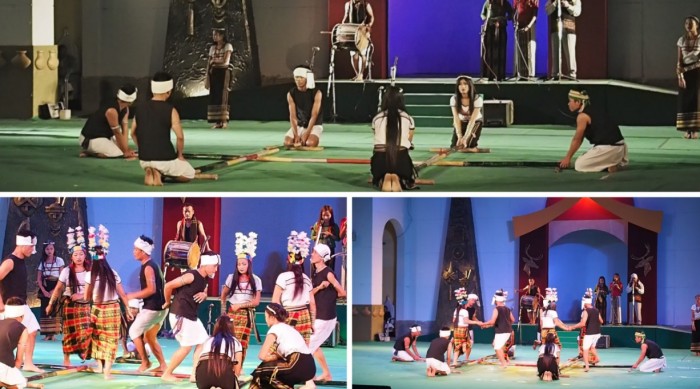
The dance was once believed to be performed in ancient times to bring solace to deceased mothers who’ve died during childbirth. However, it’s now commonly re-enacted in a variety of festivities around Mizoram, whether big to small. You’ll even find it being performed during local marriages or merrymaking events!
Bihu – Dancing Without Borders
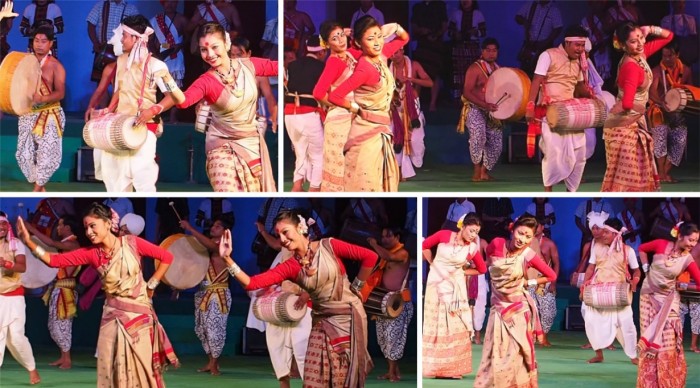
Performed during the Bohag Bihu festival in mid-April, the Bihu folk dance welcomes any participants, regardless of age, gender or social status. Originating from Assam, it marks the season of merriment where the local people shed their differences and dance to almost everything. From hopes of good harvests, romance, family or friends, it’s a folk dance that is best described as a joyous celebration of life!
The dance is notable for its brisk dance steps and rapid hand movements. Females decked in traditionally colourful Assamese clothing will dance along with the males playing traditional musical instruments such as the dhol, a double-headed drum, the taal, a pair of clash cymbals, or bamboo flutes.
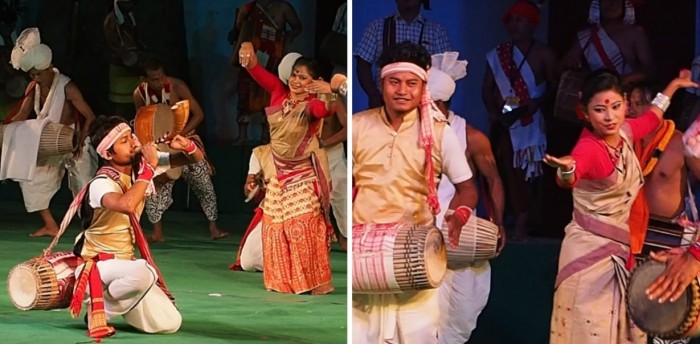
The locals also turn to the Bihu dance to express their feelings for a significant other as well, with the young boys in the village usually proposing their love for the girls through a number of traditional folk songs. With smooth lines such as “if God accepts a bribe, I would’ve requested Him to write your name in my destiny,” embedded in these songs, you’d be wondering about your own romance life once you’ve translated the lyrics!
Pung Cholam – The Flying Drummers
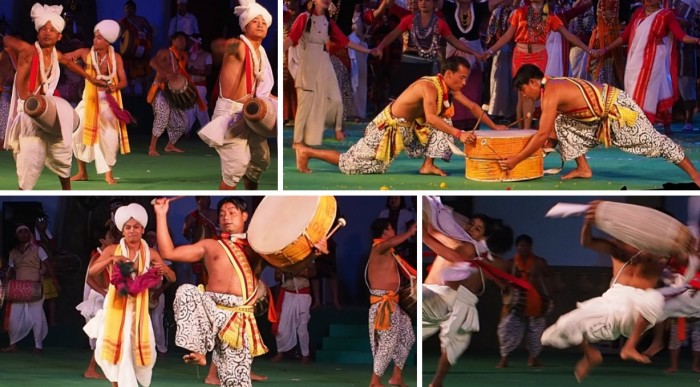
What sets the Pung Cholam apart from other drumming performances is how it requires its drummers to perform extraordinary acrobatic feats while keeping the tempo going. Originating from Manipur, this dance is a hot favourite during Holi, the Hindu spring festival, due to its thundering climax!
Comprising of only male dancers, the performers are dressed in colourful costumes and come equipped with a variety of drums. The instrument that stands out the most is the pung, an Indian hand drum that is carried by the majority of the troupe. These drummers keep the beat going as they gradually jump and bounce around the stage as the dance goes on.
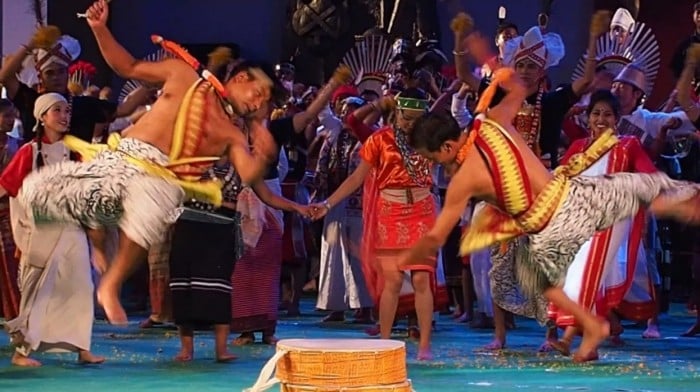
Spectators who still feel the performance is a little lacklustre should reserve their opinions till the finale, where two drummers lay a large drum in the middle of the stage and begin pounding it while performing insane twirls! It’s definitely a performance that combines grace, vigour and melody into one fiery package.
Thang Ta – Swords, Shields and Spears
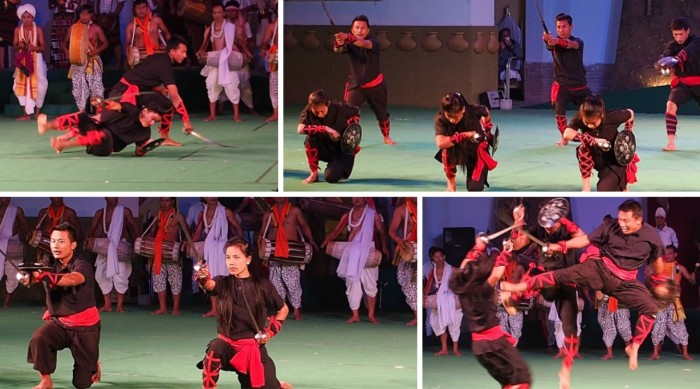
Thang Ta, or loosely translated as “the art of the sword and spear”, is a traditional Manipur dance that employs a wide range of martial arts weaponry in their performance. From metallic swords, wooden spears and small shields, the dancers employ them in a dizzying display of steel and sparks as they spar amongst each other.
The tradition was founded in ancient times, where it was developed and popularised due to constant war between the tribes in Manipur, and military conflicts with neighbouring Myanmar and Tripura. The tradition eventually went on a decline after Manipur was integrated with India, and was prohibited by the colonial British rulers.
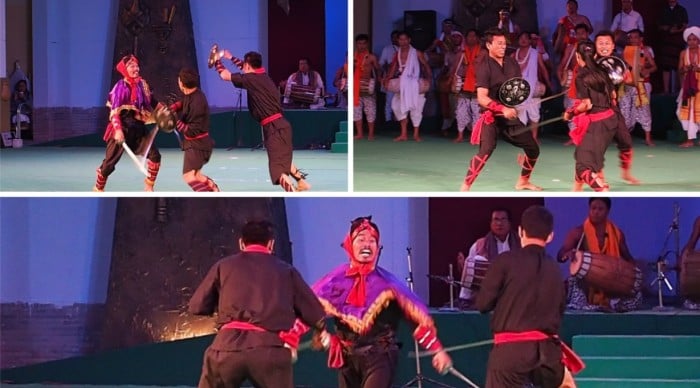
However, Thang Tha evolved to an expressive art form, where performers no longer duelled to kill, but rather to showcase their combat forms to the audience in festivals. The dancers take great pains to synchronise their weapon swings and thrusts to ensure that no accidental injuries occur during the exhibit. The more experienced ones will even take two opponents at once, with skilful, last-minute parries and dodges that will leave the audience in constant suspense!
Shim Lam – The Fly Dance
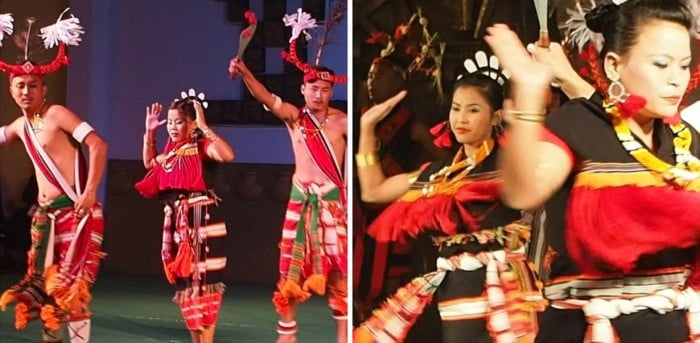
The folk dance of Shim Lam is a tradition of the Rongmei tribe in Assam, Manipur, and Nagaland, where performers in bright colourful traditional outfits spin in circles around each other while following the rhythm of the chanting singers in the background. The men strut to the music with a ritual knife in their hands, while the females follow the beat with their twirling hands in the air.
Loosely translated, the term Shim Lam means “fly dance”. This folk dance, along with other similar ones such as Ga Lam (crab dance) and Khuaiguna Lam (bee dance) from the Rongmei Tribe, are said to have originated from a past local legend of a mythical prophet called Mhung. The locals believe that Mhung, who watches over and created laws for the animals around the world, had invited all the creatures together to share their respective dances with him.
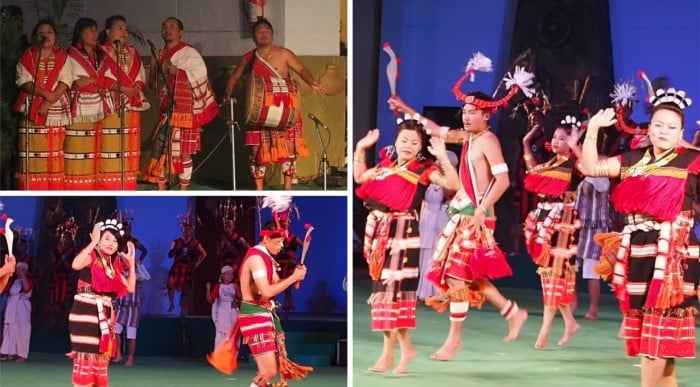
These dances were eventually passed down from generation to generation, and are still performed by the present Rongmei tribal people. Farmers are especially keen to such folk dances, as they see it as a form of good luck and a blessing before seed planting and harvest festivals!
Tangkhul Tribal Dance – A Clash Of Traditions
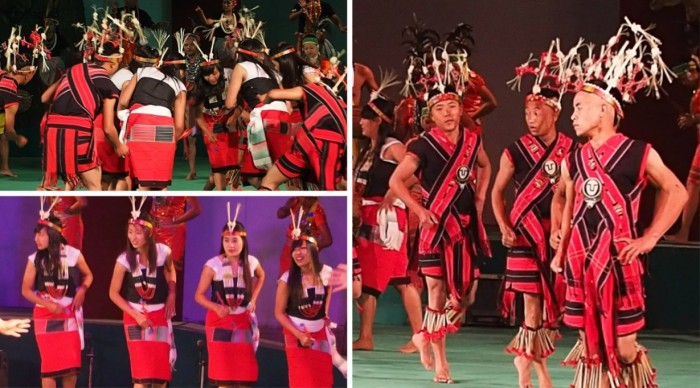
The Tangkhuls are a tribe of people with their roots tracing back to China, settling in a district located near the border lines of Manipur and Myanmar. Due to their diverse history, the community features an interesting blend of culture and tradition that has taken influence from multiple countries. It can be clearly seen reflected in their folk dances, songs and their traditional outfits!
There are plenty of different tribal dances that the Tangkhul tribe have created, from the Kathi Mahon, a dance that honours the dead, Laa Khanganui, a celebration for young maidens, and the fiery Rai Pheichak, a war dance for more troubled times. Fancy footwork and stamina are a big plus for the performers, as the dances require them to move about energetically and chant along with the song.
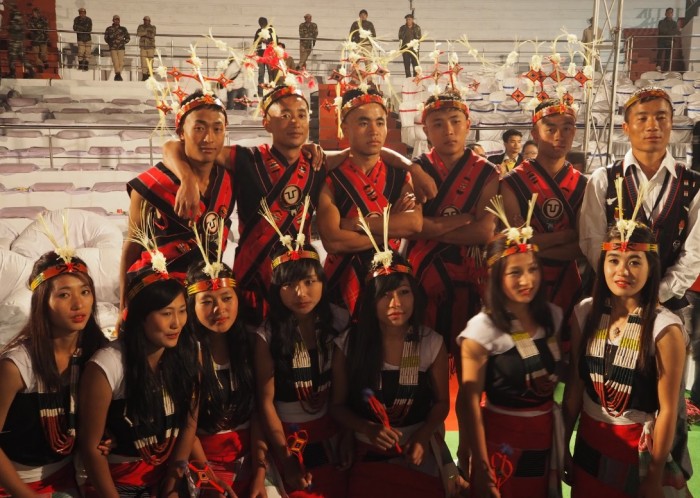
The lyrics in the folk songs that the Tangkhul people employ are often rich in contexts such as the historical experiences of their ancestors, religious fervour or romantic tales. Together with the accompanying music by traditional musical instruments such as the Tala (trumpet) and Kaha Ngashingkon (bamboo pipe), it’s a performance that’s sure to be a treat for the senses!
Also read: Breathtaking Photos Show The Himalayas Visible In India For The First Time In 30 Years
The Sangai Festival also features plenty of other amazing local dances so don’t be rushing off too early! But for now, you can go and brag about your newfound knowledge of Indian folk dance and songs.




